How to Use Empathy to Improve Your Business Process & Client Satisfaction
Last Updated on November 12, 2020 by Owen McGab Enaohwo
Empathy is the tool Liz Illg uses to run her business. On this episode of the Process Breakdown Podcast with Dr. Jeremy Weisz, Ms. Illg talks about process development using her grounded method “the client love process,” a method that helps you build business processes based on genuine and intentional client care implemented at each stage of the buyer’s journey.
Ms. Illg, also known as “The Process Queen,” shares the lessons she learned from scaling her pet-grooming business from zero, and she reveals the problems she encountered due to lack of process.
She shares practical insights on ways to implement her ‘Client Love Process’ method to your company’s onboarding procedures, the biggest mistakes you might be making with your processes, and how to jump these hurdles appropriately.
Listen to this audio:
Listen to more interviews like this:
Key Resource List:
- SweetProcess.com
- Lizillg.com
- Puff and Fluff Grooming and Pet Sitting
- Never Lose a Customer Again by Joey Coleman
Show Notes:
0:08 – Podcast intro
0:55 – Dr. Weisz shares the best solution for documenting standard operating procedures, SweetProcess, highlighting a 14-day free trial.
1:36 – The guest speaker, Liz Illg, is introduced.
2:21 – The guest talks about how she started her pet-grooming business with zero employees and with little to no money in her pocket. The company is now of high value.
4:23 – Ms. Illg shares the first nightmare she encountered when starting her business.
5:20 – Ms. Illg talks about how she battled through her first company problem.
7:52 – The guest speaker shares her story of becoming The Process Queen.
9:27 – The speaker talks about her proven process method, The Client Love Process, and how she uses it to run and scale her pet-grooming business successfully.
11:40 – She also shares a book, Never Lose a Customer Again: Turn Any Sale into Lifelong Loyalty in 100 Days by Joey Coleman, a book that has helped her implement processes effectively.
18:05 – The guest speaker gives real-life scenarios of The Client Love Process in action when onboarding clients.
23:21 – The speaker shares the next step she takes after onboarding clients.
26:57 – The speaker talks about the biggest mistakes that companies make when it comes to processes.
30:40 – Ms. Illg suggests some gift ideas you could give your clients.
34:00 – The speaker shares her favorite Audible books.
36:18 – Outro
Guest Profile:
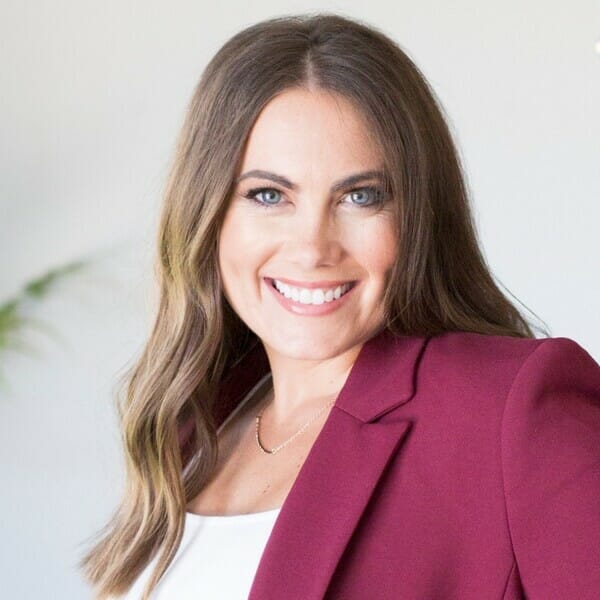
Liz Illg, also dubbed “The Process Queen,” is a seasoned business consultant who has founded two solid businesses and aims to help business owners refine their brand by creating SOPs, building processes, and creating documentation. She is simply your brand’s sidekick, helping you grow, improve, and soften your business operations.
Additionally, Liz Illg runs her own pet-grooming business, Puff & Fluff, a company she started in 2013 with nothing but sweat, little finance, and an iron-clad business process.
Transcript of the interview:
Speaker 1: Welcome to the Process Breakdown Podcast, where we talk about streamlining and scaling operations of your company, getting rid of bottlenecks, and giving your employees all the information they need to be successful at their jobs. Now let’s get started with the show.
Dr. Jeremy Weisz: Dr. Jeremy Weiss here, host of the Process Breakdown Podcast where we talk about streamlining and scaling operations of your company, getting rid of bottlenecks and giving your staff everything they need to be successful at their job. Past guests include David Allen of getting things done, Michael Gerber of the E-Myth and many more, so check out other episodes. Before I introduce today’s guest, which is perfect Liz because you are a master at exactly doing those things. So I look forward to chatting with you about that. This episode is brought to you by Sweet Process.
Dr. Jeremy Weisz: So if you’ve had members of your team ask you the same questions over and over, and it may be the 10th time they spent explaining it, Liz you probably never experienced that before right? Okay, There was a better solution. SweetProcess is a software that makes it drop dead easy to train and onboard new staff, and save time with existing staff.
Dr. Jeremy Weisz: So not only do universities, banks, hospitals use it, but I was talking to Owen the founder, and he told me first responder government agencies use it in life or death situations. So you can use SweetProcess to document all the repetitive tasks that eat up your precious time. They have a 14 day free trial, no credit card required, so you can check it out. SweetProcess, sweet like candy, S W E E T process.com.
Dr. Jeremy Weisz: Today I’m excited, Liz Illg, she helps business owners get their knowledge out of their head, into internal systems, and what I love about what you do Liz is you help create an external messaging format that works for their brands. And she says simply six months to a better business. You can go and check out her website at lizillg.com, which is L I Z I L L G.com, and fun fact is she has six dogs. So she is never… It’s always something cool going on. So Liz, thanks for joining me.
Liz Illg: Thanks for having me, I’m very excited to be here.
Dr. Jeremy Weisz: I love the topic that we’re going to talk about, which is how to build a client love process for retention. So how’d you get into doing this?
Liz Illg: Yeah, so I was not the process queen, I will admit that. I started my first brick and mortar location in 2013. I always tell people I had no business even looking to buy a business, I had no money. I was crazy, amounting debt from putting myself through undergrad and getting my master’s. And I had a little hobby of pet-sitting in the Phoenix area and it started getting really popular. And I was like, “I want a brick and mortar location that would be complimentary to my pet-sitting business.”
Liz Illg: So I started Googling one night and I found a pet grooming brick and mortar, small mom and pop shop, one groomer, one [inaudible 00:00:03:08]. The operation was very, very small. So I decided to go get a line of credit for the business and I bought my first pet grooming location in 2013, and I became the operation. I was the operation.
Liz Illg: I was open five days a week, then six, then seven. My business started booming because of my external messaging, all of the advertising and marketing that I did, and my client love process. People loved to experience what it felt like to be a customer of my business. And so I know that we’re going to be going into that briefly in a bit, but before all of that, I was the operation. I was everything in the business. I was the receptionist. I was the owner. I was the HR director. I was the I T manager, I was everything.
Dr. Jeremy Weisz: The janitor.
Liz Illg: Yes, everything. I was inventory, everything fell on me. And I started building this very successful business based on my personality and how I’m a type A personality. So the business was doing so well, I was like, “I’m going to buy another grooming shop.”
Liz Illg: Well, I always tell people that’s really when my nightmare occurred. You think you have everything, you’re like, “Ooh, I’m going to grow, I’m going to scale this business. I know how to do this.” Well the little thing that I really forgot is that I was going to need to hire people, train people and delegate things. But little did I know I had nothing documented. That was a problem.
Liz Illg: I’ll never forget the day I was driving from my first storefront to my second storefront in 2016, and I got the same call from both of my managers. I had to put them each on hold and they each had the same issue. They didn’t know how to refund a customer. And at that time I was ready to pull my hair up because I’m like, “I have built this, it’s successful. Why can’t people understand what I want them to do?”
Liz Illg: So within that one year I started documenting every question I received from my management and I answered the questions, and that is the secret sauce of being able to delegate things out. So once again, I was not a system queen or expert. I became one by understanding what kind of questions are asked, how really an operation runs, what you need to have within that internally and externally. And what I mean by internally is behind the scenes in your business, and then externally, how do you show up to your clients?
Liz Illg: And so I created my own standard operating procedure of how these businesses ran. So in 2017, this was all polished, everybody knew I could train people correctly. I was wondering, the past years why nobody stuck around, because here’s the thing. I failed those people because I did not empower them with knowledge. And I tell people invest first in documenting your processes about your business instead of investing in people, because you have to have things documented or else you are not able to empower people.
Liz Illg: So 2017 is really where my growth happened, is all of my managers knew what to do and everything was running really smoothly. The next few years I purchased multiple locations, and now I have five pet grooming locations in the Phoenix area where I’ve been able to scale this business from starting it with two employees to now about 45 between all of the locations. So it didn’t happen overnight, but it really took processes and procedures of documentation in order to be able to delegate the work out, and that’s what I’m so passionate about.
Liz Illg: And I didn’t think I was going to have a consulting agency, but I started publicly speaking about taking risks because I took a huge risk going into business, leaving my corporate job, my nine to five, all those things into something. I had never groomed a dog before in my life. So I’m saying that anybody can build a business like this and not have to be the technician of their business. And because of that I was able to actually focus on and be the visionary of my business, and that’s the thing that I love.
Liz Illg: So I was publicly speaking about taking risks but people would come up after and say, “Hey, can you help me with my business?” And I would look at them and I’m like, “I’m just an owner of a pet grooming location, how can I help you? You want a financial institution.” And I came home to my husband that night and I said, “Hey, people keep wanting to work with me, but I have nothing to offer.” And he was like… He looked at me so dumbfounded and was like, “You literally are a process queen.” And I looked at him and I was like, “Yes, I am.”
Dr. Jeremy Weisz: You crowned yourself process queen at that moment.
Liz Illg: Yes. And so that is where… It was a moment in time where I was like, “I have a message and not only a message but I can actually help people build and document their processes correctly, because it’s very technical.” It’s not creative writing, all of us we know what word vomit is. The moment we sit down at a computer and we start saying all these things that don’t make any sense to somebody that is trying to follow instructions I’d say. We need less word vomit in processes. It needs to be very to the point. People need to know where to go. I always say it’s like going for a walk, one step at a time. You need to be able to guide people one step at a time for what they need to do next in any process.
Dr. Jeremy Weisz: Let’s talk… And we’ll do it for in general about how to build the client love process, but talk about what’s the client love process look like for the grooming? Someone walks in, or even before, what does that look like?
Liz Illg: Yeah. So you also have to think about every time somebody-
Dr. Jeremy Weisz: And by the way Liz, if someone’s in the Phoenix area, what’s the name of the business, they could check it out?
Liz Illg: Yeah. It’s called Puff and Fluff Grooming.
Dr. Jeremy Weisz: Got it.
Liz Illg: And so they can go to puffandfluff.com just to see what I have been able to build. So the client love processes, so the moment somebody even identifies they want to do business with you. You haven’t got their business yet, but the minute they’ve landed on your site, they’ve called you, what kind of impression are you going to make on them? And that’s really so important. When they go to your website, what do you want them to do? That’s a process that you need to build out in your business. For me, for my grooming, book an appointment. It’s so easy. My online scheduler is available, you can book an appointment at midnight. In my consulting agency I want to get on the phone with you and chat with you about your business needs.
Liz Illg: Everybody’s going to have a different ask, so you have to look at that and say, “How can you really get that attention from that person?” Then once they come in to use your service or become a client or customer, you really need to identify how you are going to assist them and make them feel, because here’s the thing. Most people have buyer’s remorse. I don’t care what you buy. At some point you may think, “Hmm, should have spent the money there. Ooh, I might… Can get it cheaper somewhere else.” All these things that people think in the buying process.
Liz Illg: So there is a lot of framework that we can build for clients to say, “How are we going to overcome buyer’s remorse? How are you going to ensure that they know that you care about them?” And there’s a beautiful book that I highly recommend, it’s how to never lose a customer again and it’s by Joey Coleman.
Liz Illg: And he builds out framework for his experiences and it’s a great book, and we use that framework within his book because we can actually build out all of his pillars for our clients and say, “Hey, what is your budget for a new client? Is it $2? Is it $20?” And then we can have all of these different touch points associated with making sure that the client feels loved in the first 100 days.
Liz Illg: Because if you go through all of these pillars and make people feel a part of something, I almost guarantee you, and Joey Coleman would say the same thing, is you’ll never lose that customer again. You’ve reeled them in so much that they will continue to do business with you, but the first 100 days are going to be really, really key aspects in getting that lifer.
Dr. Jeremy Weisz: Yeah. I know Joey and actually he’s awesome, and that book is amazing so thanks for mentioning that. It’s powerful stuff. The issue comes in, was in someone having to implement it, so that’s what you do. You come in like, “We’ll actually help implement it.” And you pointed out two really interesting things which are really critical. One, the customer journey. I’ve gone on people’s websites, I don’t know what to do. And so you’re just right away, you need to… People are like, “Well, I don’t… People aren’t contacting me,” and you go to their page and their contact [inaudible 00:13:18] all the way in the footer or something. So first of all if you look at your site it’s super clear what someone needs to do, the action they need to take, the messaging’s there, amazing colors, branding and all that stuff.
Dr. Jeremy Weisz: And the second is buyer’s remorse. I remember there was an e-commerce business that had a site. And some of the death to some e-commerce businesses is like Amazon. Like you mentioned, “Well, can I get it cheaper somewhere else?” So what they did was they put, “It’s cheaper here than on Amazon.” So you think… Well, you don’t want to tell people to go to Amazon but that increased their conversion because it answered that buyer’s remorse question of, “Oh okay, I already know it’s cheaper here than Amazon so I don’t need to go to Amazon.” So to your point, what are some… So someone clicks, they book an appointment, they come in. What are some of the now in-person processes of the love process?
Speaker 3: Yeah. So once they leave that day, they actually get a email from me and it has a video inside of that email. And it says, “I want to hear from you.” And it’s a video of me saying, “Thank you for your business, thank you for shopping local.” And they get to see my face, they can see how I interact. I’m in my storefront behind that counter that they just saw, and so it brings me to the forefront of the business even though I’m not.
Speaker 3: So that’s also my messaging, is all of the content on the newsletters, all of those things are in my voice because I’m the owner, but that doesn’t mean I have to run the operation. I’m just steer heading it and making making sure that I’m the visionary of it. And then from there we also send a thank you gift in the mail and it’s a $1 treat bag to the client. So they feel like they got a gift. And it’s a few days after the fact, because now they’ve probably forgot about us a little bit, or they look at their dog and they’re like, “Oh yeah, we’re going to go back there.” But we’re going to go into that with that touch point and make sure that we’re communicating with them.
Speaker 3: We also send them or call them, depending on their preference, call or text, a follow-up as well between this time. So we now literally have three touch points in one week. And then from there, we… If they haven’t been in for awhile, there’s another video from me saying, “Hey, we haven’t seen you in a while. We would love to see you again,” to get them to come back in.
Dr. Jeremy Weisz: Your dogs hair is hitting the floor, you need to get it groomed.
Liz Illg: Yeah, a little reminder. Also if the dogs birthday’s arriving, we send a card in the mail as well. And then we also try to have another call if we haven’t seen him in awhile again. And basically this process keeps starting over with every single new person that comes into our orbit. So just having these nice, nice touch points, and here’s the thing. You can have all these nice touch points, but if you don’t have somebody that can actually do it for you, that becomes one of the problems. You can build out a beautiful process on all these touch points of serving the customer or client, but you also have to identify in your business who’s going to be doing all these things. Second, how many of can you actually automate? And there’s so much automation now that you can do. I also have my managers, they can send a video to the client saying, “Hey, my name’s… This is Kimberly, I hope to see Fluffy really soon. Just checking on Fluffy to see how Fluffy’s doing.” Added touch points.
Liz Illg: And with automation sometimes you can’t always get the dog’s name or the customer’s name, but in these specialized videos you can. Can you imagine if you got… You took your dog to the groomer and then the manager that checked you in and checked you out, the person that was taking care of you follows up with a cool video. It’s pure magic. That’s something that people will talk about the next time they go to happy hour or sit down at their neighbors for dinner, and they’re going to be like, “Whoa, this happened.”
Dr. Jeremy Weisz: People love their pets too.
Liz Illg: People love it, yeah. And so when people start talking about pets, the groomer, the dog trainer, the pet-sitter, we all come up in conversations because we want to know who’s in people’s orbits.
Dr. Jeremy Weisz: So Liz, some people geek out on the automation and software. Are there any ones that you would like to mention that people should check out online?
Liz Illg: Yeah, so mine are really pet specific because our database actually does a lot of internal things, so we use that. We also use a flow desk for automation. We use Zapier to integrate things that are not able to be done without it, but most in the grooming world are internally for pet businesses.
Dr. Jeremy Weisz: Very cool. So I can see how this all works from the first time they hit your website until they come in, until communicating afterwards. I figured maybe people could see how that works. What would be an example, when you come into a business and you’re like, “Okay, I’m going to map this out for you.” What do you do first with them?
Liz Illg: Yeah. So I actually try to learn, when my customers hire me to do this for them, we really learn about their business. We also learn about their price margins. That’s a big, big thing, because even if you’re not giving gifts you’re hiring somebody to make sure that this is happening, that goes into your numbers. So we always like to dive in and understand how much budget do you truly have to manage it, but also with gifts or postage or any of those kind of things, we do need to be clear on that. And then we take them through each of the pillars and then we just hear them talk.
Liz Illg: And that’s really the beauty about what I do, is we hear the customer out first. We let them… We like to experience what they love about their customers and how they want to show up differently for them. Because if you ask people this… I was literally just on a call a few hours ago, and I said, “We’re going to build out your client love process as part of your standard operating procedures.” And she goes, “Can you repeat that again?” And I said, “Your client love process.” Never heard of it before and been in business for years upon years.
Liz Illg: So this might be new news to people or old news, but you actually have to have a process. You can’t just say we thank them for their business as they leave the door and then hope they come back. And also I think it’s important too for businesses to identify how much does it cost you to onboard a new client? So for me within my grooming business, we might have 60 new clients per location a month. That costs me money. We’re making sure we’re getting them in the system, we’re making sure their vaccine records, we might be having to call their vet to get those. All of this client love process. So if we can retain the client, that’s really important. And so I’ve done the math, it takes me onboarding a new client at $5.40, to onboard a client. I just know that.
Liz Illg: We literally dissected my whole entire operation for what it takes within those few moments from somebody booking to getting them in the door to finding out what the dog’s haircut is, all these things, the discovery phase of bringing that person on. How much does that actually cost you? That’s important information for you to know as a business owner because then you can say, “I don’t want to waste $5.40, I want that person to continuously come back because then there’s less marketing that I have to do later trying to go find new people.” So why don’t we not talk about how we are just going to market and advertise for new people, but why don’t we change our conversations to how much can we actually retain people and what kind of processes can we build around retaining the people that have tried us out and fell in love with us? How do we retain them and how do we keep that person happy for a very, very long time?
Dr. Jeremy Weisz: I would bet Liz also, that’s such a good point and most people forget. They go after the new shiny… We need more clients, we need more customers or whatever, but they forget about retaining their current ones. But on top of that I just want to point something out. You said the cost of onboarding. Well I would imagine because you actually have an onboarding process, I bet people who don’t, that cost of onboarding probably doubles or triples without an actual process. So when you help them put a process in place that also decreases the onboarding cost.
Liz Illg: Yes, for sure. It’s so narrowed in that everybody on your team could possibly even go and do this process because it’s documented. So every time you hire somebody they’re going to read over the process and understand it and actually can step into that person.
Dr. Jeremy Weisz: So first thing, you understand the needs. I like how you focused on the numbers, not only retention numbers but the cost number, because most people, I would say 99% of people wouldn’t have like, “What’s the cost of your onboarding?” They would not be able to say the actual dollar figure, and there’s real time associated which equates to dollars. So what’s the next thing that you do after you hear them out, you assess that what’s going on, you focus in on the onboarding piece? What’s next that you dig in with the client?
Liz Illg: As far as the [inaudible 00:23:36]?
Dr. Jeremy Weisz: No just the process. Someone’s like, “You are the process queen Liz, I need you.” You’ve heard them out, what’s the next thing you go and do with them?
Liz Illg: Yeah, so we hear them out on this call. So we’re getting all this information from them to build it, and it takes like… It’s a 30 minute call really to ask you these kind of questions, identify how you want to show up in front of your customer or clients. And then from there, we record the call, we hang up and we get to work. And that is why I built my consulting agency the way I did, is because I am so passionate about doing the work for people. Because I’ve been there before, I’ve had to do it on my own and I’ve had to learn all of those skills and I’ve had to hire out for help to find amazing freelancers to help me build processes and procedures. And so it is really important that with my consulting, we do the work, you just tell us all the good stuff that you want to do and how you want to show up. We’re going to build you out the process.
Liz Illg: We’re going to build it behind the scenes within one to two weeks, we’re going to send it back to you to see if you want any revisions, see if you feel comfortable about it because sometimes I’m going to tell you, “I want a video of you,” and maybe the owner doesn’t want to do a video. So we’ll compromise and we’ll figure out the best solution. And then we’re going to give you the final, and we can even take it one step further of actually talking to your team and making sure that they feel good about all of these things and get it documented, upload it to a platform so it’s a living, breathing document that now you can give somebody that process. And then from there you’re going to get to work next day, new person enters your door, enters your orbit. You’re going to put them into this process and there’s going to be check and balances, and that’s something really important to… You can’t just assume that you’ve uploaded it to a platform, it’s a living breathing document, and that-
Dr. Jeremy Weisz: You can’t set it and forget it. You need to constantly tweak it, improve it.
Liz Illg: Yes, and so you need somebody within your company to make sure that all of these actions are actually being taken and being almost checked off that this email went out. And so with my grooming business, as I told you that we send a feedback email out. I actually have a close of business email from every storefront that my managers fill out and they send it to one another every day and to myself about saying what actually happened during that day, that’s part of my process. And one of those check and balances, did you send out the feedback email? Yes or no? So [inaudible 00:26:25]. It gives them a trigger to go do it and not forget about it. So that’s an example of a trigger and a check and balance to make sure that went out.
Dr. Jeremy Weisz: Liz, what… I love it. So basically formulating their client love process for them, handing it to them but making sure they have the pieces that they can continuously improve it and modify it and tweak it as it goes. What would you say… What are some of the… You probably look under the hood in a lot of businesses as a sense, what’s some of the biggest mistakes you see people making?
Liz Illg: First, doing nothing, not even understanding how they need to serve their audience. I would also say people do not document anything, everything is stored up in their head. That does no good for anyone. And here’s the thing, most business owners are like, “Oh, I can pass that knowledge, I can do this, I can do that. You have to document. And that’s one of those things, the same with your client love process, you can’t just assume that somebody knows to send out a feedback email or to send a thank you message, or to call the person or to make a specialized video. You can’t assume anyone knows how to critically think. So when you’re working with team members assume they’re not going to critically think like you, you can’t… We’re all unique in our own ways.
Liz Illg: And that’s why processes are so amazing, is because it gives you an opportunity to document things the way you would like it done. And that’s why my processes were amazing, is because I was the operation. I knew the moment a dog walked in that door, I would almost get down on my hands and knees, welcome the dog, who do we have here today? Get so excited. That’s actually a process in my business of this is what you do, not meaning get on your hands and knees, but here’s the level of energy that somebody expects. And I expect it because I built the business doing that and that’s why so many people keep coming back, is because we have these pillars in place where they feel a part of us. And that… I feel like when a business nails that aspect, magical things happen.
Dr. Jeremy Weisz: And people probably… You probably draw some amazing things out of the [inaudible 00:28:59], there’s stuff that they do they don’t realize that they just do as second nature. And when you put that… Like you may get on your hands and knees, that’s your reaction, but some people’s reaction would just be to say hello. But if you put that in the process then that is in the… Your secret sauce and your personality is in that process.
Liz Illg: Yeah, and that’s really the beautiful thing about working with any consultant on your processes, is we’re going to be able to get that secret sauce from you. Because when I ask that question, “What’s people’s secret sauce?” People are like, “I don’t know.”
Dr. Jeremy Weisz: It’s so obvious to them that they don’t… They just live it so it’s not really a secret sauce, it’s just something they do naturally. They would probably say the opposite I imagine Liz, is like, “Oh, it was just something I do naturally.” And that’s often our secret sauce, right?
Liz Illg: Yep, for sure. So it’s almost pulling those nuggets out and saying, “Hold on. Why do people like you? Why do people want to see you? Why do people want to use your service?” And that’s really where people start talking, and that’s the fun part about saying that you have something so unique about your business. We need to make sure it’s documented so that you can be replicated in the way you want to be replicated.
Dr. Jeremy Weisz: I love it. Liz, first of all I want to thank you. And I have a last question, but I just want to point people to your website. You can go to Liz and then I L L G.com to check out more, and you can contact her if you have questions. Liz, I love… People love getting gifts. And in this client love process you have something built in with gifts, whether it’s a birthday gift or after-appointment gift. I’m wondering, not just what you have… What have you either received that has been cool from other companies, or what have you seen some of the companies you advised send out as gifts?
Liz Illg: Yeah. So one of my unique things that I do when I send a client, because I do a Zoom meeting with a potential client and I see them and I look at them and I look at their space, and I actually take a moment of reflection to see. So I work with male and female, so I have different things that I believe in. I like the zero waste. So there’s certain products out there like hand sanitizer, dish soap, things like that that are… It gets people to get into that orbit that’s important to me and learn about new products on the line.
Liz Illg: I also like very specialized guests, like necklaces for a woman, something that I know would look so beautiful on her and something that stands out and that she can carry with her. So it’s really just finding out… Just find out one thing about the person. If it’s a unique sale like with my consulting business it is. I was on the phone and somebody was like, “You have a beautiful garden at your house.” And she’s like, “I wish I could.” So I sent her a little mini herb garden so she could start her own. And there’s no ever way she would have ever thought she would have got that gift from me.
Dr. Jeremy Weisz: I love it.
Liz Illg: And she’ll never forget that. It’s really about making… It’s not even about the actual gift, it’s the thought of it happening, that it landed in front of them and you were heard or you were seen, and those are the touch points that are so important when you’re thinking about how do you want to show up. A gift can be a video, it doesn’t even have to cost money. It’s really having beautiful touch points in your business, of something that somebody will always, always remember.
Liz Illg: I love books so I always send audible credits. I’ll sometimes suggest a book to somebody, “Hey, you should read it.” So then I send them an audible hoping they’ll purchase that book, but they could buy another book. So it’s really just hearing people out and knowing somebody, and these are things that I get from a 20 minute conversation.
Liz Illg: So be unique, there’s so many cool things on Etsy where you can actually get their logo on cups or anything like that. But that goes extra mile, and so that’s fun. The gifting process is really, really fun for me, but I also incorporate things that I love, that I believe in as a human because I want to spread more joy and awareness for things that I’m passionate about too.
Dr. Jeremy Weisz: Liz, so now I have to hear your favorite audible books. So go.
Liz Illg: Okay. Well, I love Building a StoryBrand by Donald Miller. [inaudible 00:34:11] . My all time book is the E-Myth. I actually read that book in 2011 and bought my company in 2013. So it was a huge, huge impact.
Dr. Jeremy Weisz: You’ve lived the E-myth. Yeah, I’ve talked to Michael Gerber several times, yeah, you’ve lived it.
Liz Illg: I lived it. I didn’t want to be making pies the rest of my life. So it’s those kind of things, that you read something you get so inspired, you don’t know how you’re going to ever make that happen from a book, but every day we get to decide where we want to be and how we want to shift our lives, and I am that book. Yeah.
Dr. Jeremy Weisz: Joey Coleman, Donald Miller, Michael Gerber, any other favorites that we should point out?
Liz Illg: Those are my top three. Those are my live by books and I preach them in my consulting business because I believe in them so, so much. So giving credit to those three individuals for building framework that people can actually use. And a lot of times is these books inspire us so much we just need somebody else to implement, and that’s why I’m so passionate about my consulting business, is because you can go read these books and get so inspired by doing it.
Liz Illg: But where we fall short is we don’t know how to, we don’t know how to come up with the process. We don’t know how to come up with that idea of how to actually make it work. So I always say I’m like that middle person that can actually do the strategy, come up with the ideas, build out the process, build out the procedure, build out the website so that it’s formulated for a call to action. It’s all of these things we learned that I like to slide in and make it a reality for people’s businesses.
Dr. Jeremy Weisz: Love it. Check out Lizillg.com. Don’t spell it wrong. It’s Liz I L L G.com. Liz, thank you so much.
Liz Illg: Thanks for having me.
Speaker 1: Thanks for listening to the Process Breakdown Podcast. Before you go, quick question. Do you want a tool that makes it easy to document processes, procedures, and or policies for your company so that your employees have all the information they need to be successful at their job? If yes, sign up for a free 14 day trial of SweetProcess. No credit card is required to sign up, go to sweetprocess.com, sweet like candy and process like process.com. Go now to sweetprocess.com and sign up for your risk-free 14 day trial.



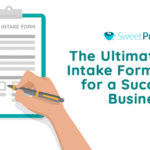


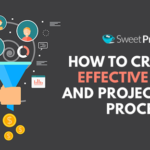
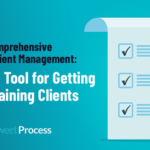
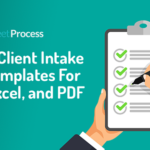


Leave a Reply